It’s transition time!
Now that we are in the last full week of summer, there is an abundance of in-season produce!
There is still quite a bit of summer produce available…tomatoes, peppers, zucchini, yellow squash, okra, eggplant and even some watermelons hanging on!
While, at the same time, the fall produce is starting to become more plentiful…acorn squash, butternut squash, spaghetti squash, apples, pears, beets, parsnips, and a comeback of greens as the temperatures drop!
Have you heard someone say,
“Oh, I think farmers’ market season ended Labor Day weekend?”
Rest assured, this is far from true! There is a wide variety of in-season produce during this “end of summer” meets “beginning of fall” season and the markets will continue to thrive for several more weeks…and months!
“I was so excited to buy that winter squash, and there it sits on my kitchen counter. Now what?”
“All those winter squash look so pretty, but I have no idea what to do with them.”
Have you or someone you know ever said this? Whether you are already enjoying the bounty of winter squash or have never tried them, we want to share some incredibly delicious reasons why winter squash should be part of your routine!
Summer squash vs. winter squash…what’s the difference?
Summer squash
Varieties such as zucchini and yellow squash, are considered the “soft-skinned squash” or “tender squash” while winter squash could be considered the “hard-shelled squash.”
Summer squash is harvested from early to late summer and is meant to be enjoyed shortly after harvest and eaten raw, sautéed, grilled or steamed. Their skins are edible and also easily damaged. Because they are so perishable, they should be enjoyed within a few days of harvesting.
 Winter squash
Winter squash
On the other hand, winter squash is harvested from late summer to early winter. Because of the thick skins, they are not as perishable and are ideal to store through the winter…hence, the name “winter squash.”
Winter squash is typically not eaten raw and, because of their thick flesh, require longer cooking times than summer squash. The skin is often removed from winter squash before eating; however, the skin can add a great texture and color, especially when roasting certain varieties of squash (like acorn and delicata squash).
Why is it important to eat winter squash frequently while it’s in season?
All varieties of winter squash are a treasure trove of taste and textures, and they are also loaded with nutrients that sky-rocket your health.
- Winter squash is loaded with phyto-nutrients, including anti-inflammatory and antioxidant properties, that fight cancer!
- They include the potassium and fiber that lower blood pressure and cholesterol!
- Winter squash provide minerals that build your bones, even as well as milk!
- They fill you up on less calories to naturally whittle your waist!
When we say winter squash is a superfood, we are not kidding!
Don’t toss those seeds!
The squash seeds are loaded with protein, fiber and zinc and can be a delicious snack when dried and roasted. And, it’s so easy…simply rinse and dry. Then, toss with a little olive oil and salt (or your favorite mix of seasonings). Place on a baking sheet and roast in the oven (300 to 325 degrees), for about 10 to 20 minutes or until toasted and lightly browned. Let cool, and then store in an airtight container…they will stay fresh for several days.
What are the types of winter squash?
There are many varieties and here are some of the most popular and the ones that you are most likely to find at your local store or farmers’ market.
 Acorn squash: has a subtly sweet and nutty flavor…and yes, you can eat the skin! Our favorite way to enjoy acorn squash is to roast it in the oven.
Acorn squash: has a subtly sweet and nutty flavor…and yes, you can eat the skin! Our favorite way to enjoy acorn squash is to roast it in the oven.
The Egg-in-the Hole Acorn Squash is like autumn on a plate, as is the Maple Roasted Acorn Squash & Apples. Plus, the Acorn Squash & Caramelized Onion Dip is loaded with flavor and the Wild Rice Stuffed Acorn Squash would be a perfect addition to your Thanksgiving table!
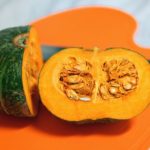 Buttercup squash (this is not a type-o, buttercup squash is different than butternut squash!): short and round, buttercup squash has in inedible dark green rind and vibrant orange flesh. It is similar to a kabocha squash, but has a round ridge on the bottom.
Buttercup squash (this is not a type-o, buttercup squash is different than butternut squash!): short and round, buttercup squash has in inedible dark green rind and vibrant orange flesh. It is similar to a kabocha squash, but has a round ridge on the bottom.
Buttercup is considered sweeter than many other winter squash with its sweet creamy flavor. Steaming and baking is best for buttercup squash because its flesh can tend to be dry. It also works great in curry dishes.
 Butternut squash: this pear shaped squash is the sweetest variety of all of the winter squash, and the most versatile and most popular.
Butternut squash: this pear shaped squash is the sweetest variety of all of the winter squash, and the most versatile and most popular.
There are tons of ideas for butternut squash on Eat REAL America! Some of our favorites include the Fire Roasted Sloppy Joes, Butternut Squash Shakshuka, Butternut Squash Veggie Bake, Pear & Butternut Squash Salad, Very Veggie Minestrone, Roasted Butternut Squash Fajitas, Butternut Squash & Pesto Grilled Cheese…and so many more!
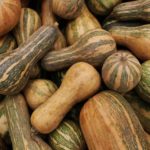 Delicata squash: also known as the “sweet potato squash,” this squash is shaped like a small cylinder and typically has yellow skin with green stripes.
Delicata squash: also known as the “sweet potato squash,” this squash is shaped like a small cylinder and typically has yellow skin with green stripes.
The skin of the delicata squash is edible and they are excellent for stuffing — try our Stuffed Squash Taco Boats. We think you will also love the Sautéed Squash with Oranges & Pistachios, Autumn Minestrone and the Maple Garlic Roasted Squash!
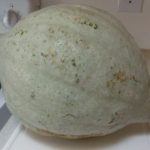 Hubbard squash: largest variety of all the winter squash — hubbard squash are typically deep green to gray or blue, and are typically only sold at farmers’ markets because of their size.
Hubbard squash: largest variety of all the winter squash — hubbard squash are typically deep green to gray or blue, and are typically only sold at farmers’ markets because of their size.
When sold at the store, they are generally sold pre-cut and seeded. Hubbard squash have a rich, sweet pumpkin flavor and are an excellent substitute for any other type of winter squash in recipes.
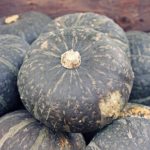 Kabocha squash: short, squatty and round, and very similar to buttercup squash. The Green Kabocha will have a dull finish with dark green skin, and sometimes will have small lumps. The Orange Kabocha (known as the Sunshine squash) has a bright, reddish-orange skin.
Kabocha squash: short, squatty and round, and very similar to buttercup squash. The Green Kabocha will have a dull finish with dark green skin, and sometimes will have small lumps. The Orange Kabocha (known as the Sunshine squash) has a bright, reddish-orange skin.
They have a bright yellow-orange flesh inside and are also a great substitute for any other winter squash. This type of squash works great as a pie filling! It is also delicious in the Moroccan Vegetable Curry!
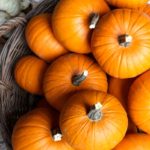 Pumpkin: not just for decorating! The pumpkins used for baking are smaller than the ones for decorating.
Pumpkin: not just for decorating! The pumpkins used for baking are smaller than the ones for decorating.
For the best flavor and texture, choose varieties that are grown for eating such as sugar pumpkins, sweet pumpkins, cheese pumpkins, and different heirloom varieties.
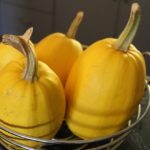 Spaghetti squash: the most fascinating squash of all (for kids and adults!) — and the easiest way to turn a vegetable into noodles! This squash is fairly large and cylinder-shaped. It is pale-cream to bright yellow on the outside.
Spaghetti squash: the most fascinating squash of all (for kids and adults!) — and the easiest way to turn a vegetable into noodles! This squash is fairly large and cylinder-shaped. It is pale-cream to bright yellow on the outside.
When cooked, the inside of the squash easily shreds into noodles, like spaghetti. The squash noodles are crisp-tender, with a mild flavor. They are not too sweet which makes them an excellent vegetable substitute for pasta. See our coaching tip for more info! There are many spaghetti squash recipes on Eat REAL America including the Spaghetti Squash Noodle Bowl, Spaghetti Squash Pad Thai, Spaghetti Squash Pancakes, Mexican Spaghetti Squash Stir Fry and the Spaghetti Squash Hash!
How do you pick and choose winter squash?
- The stem is the best indicator of ripeness. It should be intact, firm, dry and cork-like. If a stem is leaking sap, it means it was harvested before it was ready.
- They should feel firm and heavy for their size
- No soft spots, bruises or cuts
- They should have a dull, not shiny, finish. Shiny skin means the squash was likely picked too early.
How do you store them?
You want to store winter squash in a cool dark place, and most of them will keep easily for up to one month or longer!
- Acorn and spaghetti squash: one month
- Butternut squash: 2-3 months
- Hubbard, banana, buttercup or turban: 3-6 months
How do you peel and cut winter squash?
In our experience, the easiest way to cut a winter squash is with a large knife, such as a chef’s knife. First, cut the ends off the squash, then cut it in half, or in manageable large pieces. If you find it difficult to cut, you can cook it in the microwave for a couple minutes, which will soften it and make it easier to cut. You can then use a spoon to scoop out the seeds. Once the seeds are out, you can then use a knife to remove the skin if desired. You are then ready to cut the squash in bite size pieces or slices for your recipe.
Check out our videos:
- How to cut and cook a spaghetti squash.
- Peel and cube a butternut squash.
How do you enjoy eating them?
 We have all kinds of recipe ideas that are sure to impress your taste buds, as well as your family and friends! Watch a recent demo of our Egg in the Hole Acorn Squash on Good Morning KAKELand. The next morning, I saw the TV anchor (Frank) at the farmers’ market buying his acorn squash! He posted his fantastic results on Facebook and said it was “super yummy!”
We have all kinds of recipe ideas that are sure to impress your taste buds, as well as your family and friends! Watch a recent demo of our Egg in the Hole Acorn Squash on Good Morning KAKELand. The next morning, I saw the TV anchor (Frank) at the farmers’ market buying his acorn squash! He posted his fantastic results on Facebook and said it was “super yummy!”
Recently, an Eat REAL America member told us she never thought she liked butternut squash (she even said she thought it was “creepy”). She tried roasting it in the oven and couldn’t believe it…she loved it! She said, “I never knew what I was missing, and now I absolutely love it!”
Share your results with us…
what is your favorite way to enjoy winter squash?
And, which one is your favorite?
 LEARN MORE ABOUT THE NAPKIN!
LEARN MORE ABOUT THE NAPKIN!
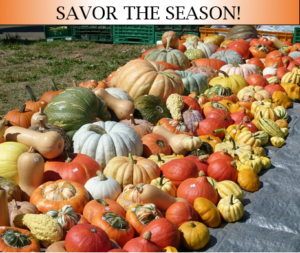
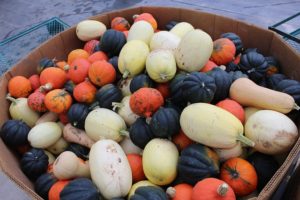
Leave A Comment